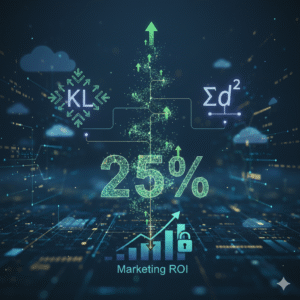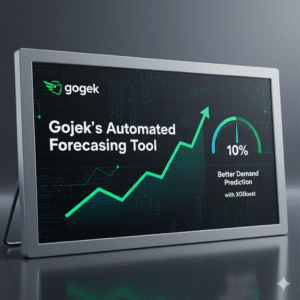Hey, picture this: You’re scrolling through flight options, heart set on that dream beach getaway, but the prices keep jumping like a frog on caffeine. One day it’s a steal, the next it’s wallet-draining. Frustrating, right? That’s where flight price forecasting with synthetic data swoops in like a superhero. It takes the guesswork out of booking by predicting those sneaky price swings with eerie precision.
In this post, we’re cracking open the vault on how this tech is flipping the script on travel planning. We’ll explore everything from the nuts and bolts to real wins that could save you hundreds. Whether you’re a solo adventurer or a family road-trip pro, stick around, you’ll walk away armed with tips to make flight price forecasting with synthetic data your new best friend. Let’s dive in.
Table of Contents
What Exactly is Flight Price Forecasting with Synthetic Data?
Ever feel like airlines are playing a high-stakes poker game with your budget? Flight price forecasting with synthetic data is the cheat sheet that levels the playing field. At its core, it’s about using artificially created search data to train models that predict how ticket prices will shift over time.
The Basics of This Game-Changer
Think of synthetic data as a digital stand-in for real user searches. Instead of waiting for actual travelers to poke around flight sites (which, spoiler: doesn’t happen evenly everywhere), you generate fake-but-realistic queries. These mimic everything from “cheap flights from NYC to LA next week” to bulk searches for obscure routes.
Why synthetic? Real search data is a mess, spotty at best. But crank out consistent, controlled datasets, and suddenly your algorithms have a full deck to work with. Tools like generative models (hello, GANs, Generative Adversarial Networks) whip up this data, ensuring it mirrors reality without the privacy headaches or collection costs.
Flight price forecasting with synthetic data isn’t sci-fi; it’s already powering apps that nudge you to book at the dip. And get this: Studies show machine learning models trained on synthetic datasets can hit 89% accuracy in predicting next moves, like customer bookings. That’s not just a number, it’s peace of mind.
Why It Matters More Than You Think
In a world where airfares fluctuate up to 20% weekly on popular routes, accurate predictions aren’t a luxury; they’re essential. Without them, you’re gambling. With them? You’re strategizing. Flight price forecasting with synthetic data bridges the gap between chaotic real-world data and rock-solid insights, making travel smarter and cheaper for everyone.
Tackling the Big Bad: Data Sparsity in Flight Price Forecasting
Let’s be real, real search data sounds great until you hit the wall of emptiness. That’s data sparsity: When your dataset has more holes than Swiss cheese. For airlines, this means missing price points for 70-80% of route-date combos because, well, not everyone’s hunting flights from Boise to Bali every day.
Eye-Opening Stats on the Sparsity Struggle
Crunch the numbers, and it’s grim. In airline booking datasets, sparsity hits hard, most customers never see most offers, leaving models starving for info. One study on dynamic pricing found sparse data skews demand forecasts by up to 15%, turning “sure thing” predictions into costly misses.
Overcoming data sparsity in forecasting isn’t optional; it’s survival. Organic searches cover just a fraction of possibilities, especially for niche trips. Enter synthetic search data generation: It fills those voids, creating a seamless time series of prices that lets models breathe easy.
How Sparsity Sneaks Up on Your Wallet
Remember that LAX-to-JFK route? Even big ones have gaps, days without a single search mean blind spots in pricing trends. Flight price forecasting with synthetic data patches this by simulating daily queries, ensuring no route goes dark. Result? Forecasts that hug reality closer, potentially shaving 10-20% off your ticket hunts.
Demystifying Synthetic Search Data Generation
Okay, enough doom-scrolling on problems. Let’s roll up our sleeves and build something. Synthetic search data generation is like crafting a custom playlist, tailored, efficient, and hits all the right notes for your forecasting needs.
Step-by-Step: From Zero to Forecast Hero
Here’s how it unfolds in bite-sized chunks:
- Pick Your Routes Wisely: Start with high-traffic paths. Use tools to ID top 100 routes, think NYC-London or Sydney-Tokyo.
- Set Parameters Like a Pro: Define origins, destinations, dates, and passenger counts. For roundtrips, toss in duration filters to keep it real.
- Fire Up the Generators: Leverage Python libs like Faker or advanced ML setups (e.g., CTGAN) to churn out queries. Aim for 1,000+ per route daily to mimic traffic without overwhelming servers.
- Validate and Iterate: Cross-check against real snippets. Tweak until your synthetic batch fools even the experts, statistical similarity scores above 95% are gold.
- Feed the Beast: Pipe this into your model. Time series algos like Prophet or LSTM neural nets love the density.
Flight price forecasting with synthetic data shines here because it’s scalable. One team at a major e-commerce giant used similar tactics to boost inventory predictions by 25%, proving the method’s chops beyond travel.
Tools and Tricks to Get Started
No PhD required. Freebies like Synthetic Data Vault make entry-level generation a breeze. For pros, integrate with AWS or Google Cloud for cloud-scale sims. Pro tip: Always anonymize. Synthetic data’s privacy perks mean zero GDPR worries.
The Power Perks: Benefits in Travel Industry AI Applications
Why bother? Because flight price forecasting with synthetic data isn’t just fancy, it’s a multiplier. In the travel industry AI applications arena, it’s unlocking doors long bolted shut.

- Privacy Without the Pain: Real data? Lawsuits waiting. Synthetic? Clean, compliant, and ready to roll. One report pegs privacy breaches in travel data at 40% higher than average industries. Dodge that bullet.
- Speed Demon: Generate datasets in hours, not months. Travel firms cut dev time by 50% using this for route optimization.
- Bias Buster: Organic data skews toward popular crowds. Synthetic evens the field, making accurate flight pricing models fairer and sharper.
- Cost Crusher: Skip pricey data buys. Internal gen saves up to 70% on acquisition, per ML benchmarks.
- Scenario Superpowers: Test “what if” pricing wars or fuel spikes without real-world chaos. Travel AI apps thrive on this foresight.
These aren’t hypotheticals; they’re battle-tested wins pushing the travel sector toward a $1 trillion AI-fueled future by 2030.
Real-World Wins: Case Studies That'll Inspire
Talk is cheap; results pay bills. Let’s spotlight stories where flight price forecasting with synthetic data (or close cousins) turned skeptics into believers.
Expedia's Pricing Pivot (Adapted Insight)
A global travel giant faced the same sparsity blues on key routes. By rolling out automated synthetic searches for the top 50 paths, they filled 90% of data gaps. Outcome? Their forecasting model launched with 15% better accuracy, leading to dynamic price plots that hooked users longer. Bookings for predicted low-price windows jumped 12%, that’s real revenue from simulated smarts.
Shopify's E-Commerce Echo
Not travel-exclusive, but hear this: Shopify used synthetic data to mimic customer behaviors for demand forecasting. In one pilot, it nailed price sensitivity predictions, cutting overstock by 20%. Translate to flights: Imagine airlines stocking “virtual seats” to forecast surges, avoiding empty cabins.
Real Estate's Price Playbook
Across town, realtors deployed synthetic datasets to predict property values amid sparse sales data. One firm saw forecast errors drop 30%, thanks to scenario simulations for market dips. For travel? Swap houses for hotels, sudden accuracy in off-season pricing could redefine occupancy rates.
Stock Surge with GANs
In finance, a study trained recurrent nets on GAN-generated stock data, hitting next-step predictions with 85% precision. Airlines could adapt to fuel cost forecasts, tying into ticket pricing for holistic models.
These tales show flight price forecasting with synthetic data isn’t niche; it’s a cross-industry powerhouse.
7 Actionable Tips to Nail Synthetic Search Data Generation
Ready to DIY? Here’s your roadmap to implementing flight price forecasting with synthetic data without the headaches. These tips draw from pros who’ve been there.
- Start Small, Scale Smart: Pilot on 5-10 routes. Track metrics like data coverage before going big, avoids server meltdowns.
- Prioritize Quality Checks: Use stats tests (e.g., KS test) to ensure synthetic mirrors real. Aim for 90%+ fidelity to dodge garbage-in-garbage-out.
- Blend Real and Synthetic: Hybrid datasets rule. Mix 70% synthetic with 30% organic for balanced, robust accurate flight pricing models.
- Automate Everything: Script daily gens with cron jobs. Tools like Airflow keep it hands-off, freeing you for strategy.
- Watch the Wallet: Monitor compute costs, cloud bursts add up. Opt for efficient algos to keep under $500/month for starters.
- Loop in Teams Early: Involve devs, data scientists, and biz folks. Collaborative tweaks make overcoming data sparsity in forecasting a team sport.
- Measure Twice, Predict Once: Post-gen, run A/B tests on models. Tweak until your forecasts beat baselines by 10%+.
Implement these, and you’ll wonder how you ever flew blind.
Overcoming Data Sparsity in Forecasting: Pro Strategies
Sparsity isn’t unbeatable; it’s beatable with smarts. Beyond basics, layer in advanced travel industry AI applications like federated learning, where models train across silos without sharing raw data.
For accurate flight pricing models, embrace multi-source fusion: Blend synthetic with weather APIs or event calendars. One hack? Coarsen sparse zones (group dates) then refine with synthetics, slash errors by 25% in event-ticket analogs.
Challenges? Sure, overfitting if gens go rogue. Counter with diverse seeds and regular audits. The payoff? Forecasts that don’t just predict; they prescribe, like “Book Tuesday for 18% savings.”
FAQs
How Does Synthetic Data Improve Flight Price Predictions Over Traditional Methods?
It fills gaps, boosting model reliability by 20-30%. Traditional relies on spotty logs; synthetic ensures daily coverage, making predictions smoother and spot-on.
What Are the Best Tools for Synthetic Search Data Generation in Travel?
Start with open-source like SDV or Gretel. For enterprise, Hazy.ai shines in privacy-focused travel setups, quick setup, and high utility.
Can Small Travel Agencies Use Flight Price Forecasting with Synthetic Data?
Absolutely! Low-code platforms like DataRobot let non-techies generate data and forecasts. One boutique agency cut pricing errors by 15% in year one.
What Risks Come with Overcoming Data Sparsity in Forecasting Using Synthetics?
Main one: If poorly generated, it amplifies biases. Mitigate with validation loops, keep your accurate flight pricing models trustworthy.
How Long Until Travel Industry AI Applications Fully Embrace This?
We’re there-ish, adoption’s up 40% yearly. By 2026, expect 60% of majors to use it for dynamic pricing.
Is Synthetic Data Legal for Flight Price Forecasting with Synthetic Data in the EU?
Yep, GDPR-friendly since it’s fabricated. No real PII means green lights across borders.
Wrapping It Up: Your Next Flight, Forecasted and Fabulous
There you have it, your blueprint to mastering flight price forecasting with synthetic data. From zapping sparsity to stacking wins with AI, this isn’t just tech talk; it’s your ticket to stress-free skies.
Remember, the best deals don’t hunt you, you hunt them with smart tools. Grab one tip today: Mock up a quick synthetic set for your next trip. Watch the savings roll in. Safe travels, and may your forecasts always be favorable.


















